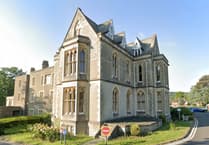TREES are being cut down across local woodland this week, to tackle those blighted by Ash dieback.
Surrey County Council will be felling diseased Ash trees across its countryside estate. Ash dieback is caused by a non-native fungus called Hymenoscyphus Fraxineus that weakens a tree’s structure due to leaves and branches dying higher up the tree.
“It is untreatable, spreads rapidly and therefore needs to be managed correctly to protect public safety,” said a SCC spokesman. “As England’s most wooded county, Surrey has a lot of Ash trees, which are sadly affected by this disease. Infected trees are unpredictable, often becoming dangerous long before they die and so in the interest of public safety, the county council will carry out selective felling.”
From today, the SCC countryside team and specialist contractors will be removing trees from Worplesdon Commons. Other affected sites include Sheepleas, near East and West Horsley, and Hill Park near Oxted.
SCC said an ecologist is working with contractors throughout the process to minimise any impact on wildlife, including having a presence on site at the beginning of each phase of works.
Works are being prioritised to take place outside of bird nesting season to minimise environmental impact.
Once felling takes place a process of natural regeneration occurs, with existing trees releasing fertile seeds that germinate successfully to produce new saplings and over time regenerate woodland.
“Surrey County Council owns more than 6,500 acres of countryside available for public access and enjoyment. Ash Dieback has had a devastating effect on Ash trees not only across Surrey but nationally,” said Marisa Heath, Surrey County Council Cabinet Member for the Environment.
“It is vital that we remove any trees that could cause a threat to public safety. Over the coming weeks a series of felling works will take place across our countryside estate, and we apologise for any inconvenience this may cause.
“We understand the important role that trees play in helping us reduce the impacts of climate change, and we only remove trees when there are no other options. We have more plans during this tree planting season, which is already underway, to continue to plant trees across the county.”
Working in partnership with Surrey Outdoor Learning and Development (SOLD), suitable timber from the felling will also be cut into stumps, for schools to collect and use as stools. Other uses of the felled ash wood from the sites includes being used for wood fuel, either as firewood or chipped and left on site in small quantities to enhance biodiversity.
As part of Surrey’s ambition to be a carbon neutral county by 2050, Surrey County Council has a target to facilitate the planting of 1.2 million new trees, one for every resident, by 2030.





Comments
This article has no comments yet. Be the first to leave a comment.